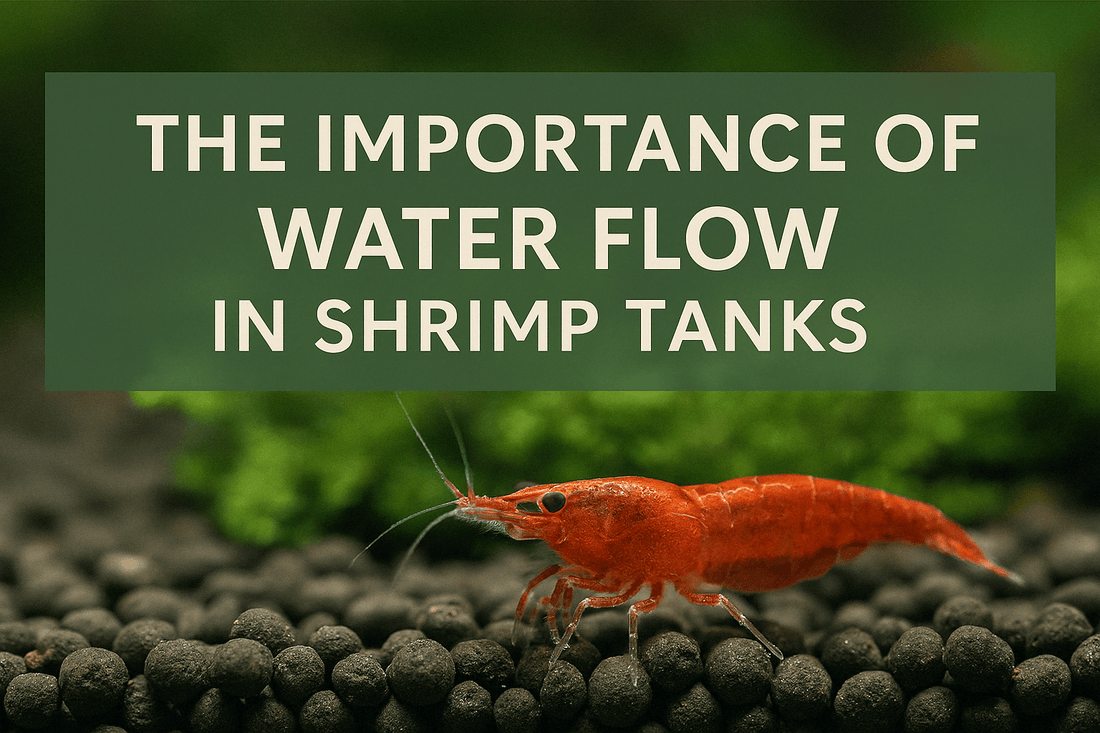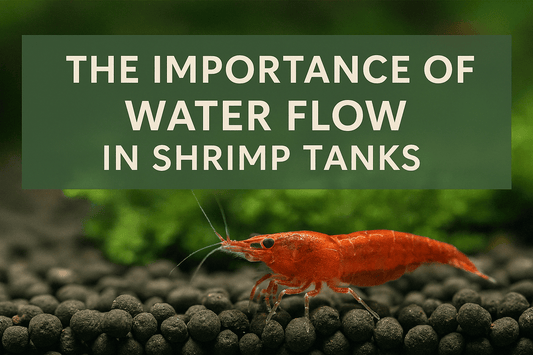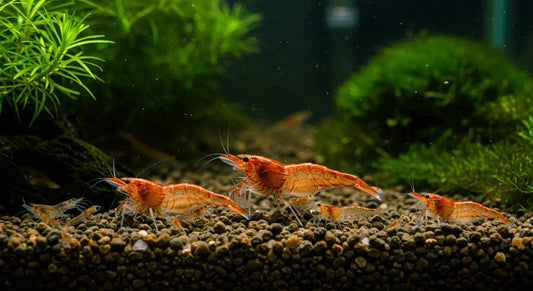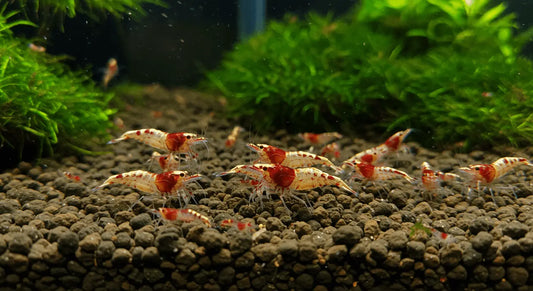
The Importance of Water Flow in Shrimp Tanks
Water flow is easy to overlooked when setting up a shrimp tank, yet it plays an important role in maintaining a healthy environment. Think of it as an unsung hero in shrimp care—ensuring the water stays oxygenated and free of waste while mimicking the natural flow of streams and rivers. In this guide, we'll explore the importance of water flow in shrimp tanks, and how finding the right balance can make a difference in your shrimp's well-being.
Why Shrimp Need the Right Water Flow
Shrimp can be delicate creatures with specific needs, especially when it comes to their aquatic environment. They're naturally found in streams, rivers, and other slow-moving bodies of water. While an aquarium will never imitate this environment, it’s an important reference point.
Oxygenated Water for Healthy Shrimp
Proper oxygenation is vital for shrimp welfare. Just like we need fresh air, shrimp need well-oxygenated water to thrive. A gentle flow keeps oxygen circulating, ensuring there are no dead spots where oxygen is depleted. Without enough oxygen, shrimp can suffer, much like being in a room with no airflow.
Tip: If you notice your shrimp staying near the surface, it might be a sign that your tank's oxygen levels are low. Increasing the flow, gently, can help distribute oxygen more evenly.
Mimicking Nature's Flow
In the wild, shrimp enjoy slow, steady currents, similar to a lazy stream. This flow benefits them by assisting with food movement, providing natural exercise, and keeping the tank environment clean. To replicate this, you need to adjust your tank's water flow to mimic these conditions. A stagnant tank is detrimental to your shrimp's health.
Related Article: How to Create a Natural Shrimp Habitat
Waste Removal
Shrimp produce waste, and if you are using a sponge filter, the right water flow helps pull this waste toward the filter. Without it, debris can accumulate, leading to cloudy water and unhealthy conditions.
Learn More: Best Shrimp Tank Filters for Waste Management
The Risks of Too Much Flow
While water flow is important, there is such thing as too much flow. If the water is moving too much it can cause stress to shrimp, so it's important to strike the right balance.
Stress from Strong Currents
Shrimp are not built to withstand strong currents. Overwhelming water flow forces them to fight against the current just to move around or feed, which can lead to stress and even illness.
Tip: If your shrimp don’t have any spots to rest and graze, the flow is too strong.
Shrimplet Hazards
Baby shrimp, or shrimplets, are especially vulnerable to strong currents. A powerful flow could cause them to be sucked against the filter or tossed around the tank, leading to injury or death.
Related Article: How to Care for Shrimplets in Your Tank
Getting the water flow just right is easier than you think. With a few adjustments, you can create an optimal environment for your shrimp.
How to Achieve the Perfect Shrimp Tank Water Flow
Select the Right Filter
A gentle filter like the Qanvee Bio Sponge Filter is ideal for shrimp tanks. It offers soft water movement, keeping things clean without harming your shrimp or shrimplets.
Adjust the Flow
Many filters allow you to adjust the flow rate, or you can add a 1/4” control valve to reduce the flow. You want as much air as possible without a gurgling sound (that indicates that there is too much air). If your shrimp don’t have a space to rest or seem to get pushed around then turn down the air.
Use Natural Barriers
Adding plants, rocks, or Cholla Wood can help diffuse the current. These barriers create calm zones where shrimp can retreat if the flow becomes too strong.
Monitor Water Temperature
Water flow can affect temperature distribution in the tank. Pair your filter with a reliable heater to maintain a consistent temperature, ensuring your shrimp aren't exposed to hot or cold spots.
Check Oxygen Levels Regularly
If your shrimp are swimming at the surface or clustered near the filter, it could be a sign that oxygen levels are low. Increase the flow slightly to improve oxygenation, but ensure it remains gentle.
Quick Tip: Test your flow by dropping a flake of food into the tank. If it drifts slowly, your flow is ideal. If it speeds across, reduce the flow.
Bringing the Natural Flow Into Your Tank
Replicating the natural environment in your tank is crucial for your shrimp's health. In nature, shrimp thrive in environments with gentle, oxygenated water. By adjusting the water flow in your tank, you mimic these conditions and create a stress-free environment for your shrimp. It's a small change with a big impact on their well-being.
Wrapping It Up
Water flow may not be the first thing you think about when setting up a shrimp tank, but it's critical for maintaining a healthy environment. Too little flow leads to stagnant water, while too much can overwhelm your shrimp. Finding the right balance is key to ensuring your shrimp thrive. Use equipment like the Qanvee Bio Sponge Filter and a reliable heater to maintain the perfect flow.
Take a moment to assess your tank's water flow. A small adjustment can turn your tank into a paradise for your shrimp, and they'll thank you for it with their vibrant colors and lively antics.
Recommended Products for Optimal Shrimp Tank Water Flow
Frequently Asked Questions About Shrimp Tank Water Flow
How can I tell if my shrimp tank has enough water flow?
Watch your shrimp's behavior - they should be able to move freely without being pushed around. Also, check for debris accumulation; proper flow will move waste toward the filter.
Can I use an air stone to increase water flow in my shrimp tank?
Yes! Air stones are excellent for creating gentle currents while increasing oxygen levels. Position them strategically to avoid creating too strong a current in one area.
Do different shrimp species require different water flow rates?
Yes, some varieties like Amano shrimp can handle slightly stronger currents than more delicate species like Crystal Red Shrimp. Research your specific species' needs for optimal care.




